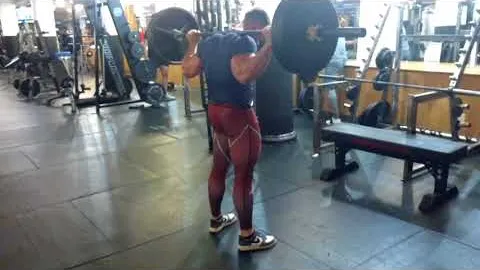
The pause squat exercise is an effective strength training movement that primarily targets the lower body muscles, particularly the quadriceps, hamstrings, and glutes. This exercise not only helps in improving overall lower body strength and power but also aids in enhancing functional stability and coordination. In this comprehensive guide, we will delve into the benefits and proper technique of performing the pause squat exercise.
The pause squat technique involves performing a regular squat but with a pause at the bottom position. During this pause, you hold the position for a specific duration, usually a few seconds, before returning to the starting position. This exercise not only enhances lower body strength but also helps in developing explosiveness and power during the concentric (upward) phase of the squat.
Increased Muscle Activation: The pause at the bottom of the squat maximizes muscle activation, particularly in the quads, hamstrings, and glutes. The prolonged pause allows for deeper muscle fiber recruitment and activation, leading to increased strength gains and muscle development.
Improved Squat Mechanics: By pausing at the bottom of the squat, you can work on your squat mechanics and form. This exercise helps in developing proper movement patterns, ensuring that your knees are tracking over your toes and your hips are properly engaged, which reduces the risk of injury and maximizes performance.
Enhanced Strength and Power: The pause squat primarily targets the muscles responsible for lower body strength and power. By focusing on developing strength in these muscle groups, you can improve your performance in other compound exercises like deadlifts and lunges.
Increased Range of Motion: The pause squat requires you to descend to a deeper squat position. This extended range of motion stimulates greater muscle activation and flexibility in the hips, ankles, and knees, ultimately enhancing mobility and functional strength.
Improved Stability and Balance: Pausing at the bottom of the squat challenges your stability and balance. By improving these aspects, you can better control your body during squats and other functional movements, leading to increased overall athletic performance.
Starting Position: Begin by standing with your feet slightly wider than hip-width apart, with your toes pointing slightly outward. Place a barbell across your upper back, resting it on your trapezius muscles. Engage your core and maintain a neutral spine throughout the exercise.
Descending Phase: Initiate the squat by pushing your hips back and bending your knees, as if sitting back into a chair. Maintain a controlled descent as you lower your body until your thighs are parallel to the ground, or slightly below. Ensure your knees are tracking in line with your toes and your chest is lifted.
Bottom Position Pause: Once you have reached the bottom position of the squat, hold the position for a specific duration, such as 2-3 seconds. Use this pause to focus on maintaining proper form, engaging your glutes and core, and breathing deeply.
Ascending Phase: After the pause, engage your glutes and drive through your heels to push yourself back to the starting position. Maintain control throughout the movement, keeping your core engaged and avoiding excessive use of momentum.
Repetition and Sets: Aim for 3-4 sets of 8-12 repetitions, depending on your fitness level and goals. Gradually increase the weight as you become more comfortable and proficient with the exercise.
Start with Lighter Weights: When performing pause squats for the first time, start with lighter weights to get accustomed to the pause and maintain proper form. As you get more comfortable, gradually increase the load.
Focus on Form: Proper form is crucial for maximizing the effectiveness of the pause squat exercise. Ensure you maintain a neutral spine, engage your core, and track your knees over your toes throughout the movement.
Control Your Descent: Avoid rushing the descent phase and focus on maintaining control. Slowly lower your body, allowing your muscles to work through the full range of motion.
Breathe: Proper breathing technique is key to maintaining stability and maximizing strength during pause squats. Inhale as you descend, hold your breath during the pause, and exhale as you ascend.
Consult a Professional: If you're new to strength training or have any underlying health conditions, it's essential to consult with a fitness professional to ensure proper technique and prevent injury.
Incorporating pause squats into your lower body workout routine can be highly beneficial for increasing strength, power, and overall athletic performance. Remember to start with lighter weights, maintain proper form, and gradually progress in weight and intensity. With consistency and dedication, the pause squat exercise can help you achieve your fitness goals and take your lower body strength to new heights.
If you're looking for a gym, fitness club or yoga studio, you've come to the right place.
You can find information about gyms in your area. Browse catalog of gyms and find gyms with classes which are you looking for.
On gym page you can find simple information like address, phone or website. You can find list of available classes. You can check availability of personal training or small group classes. On place page you can also see information about open hours.
You can find gyms near you with amenities, courts, studios and equipments.
Use our map to find gym at your city or district.
In Gym Navigator you can find list of exercises with movies for many body parts.
You can browse exercises catalog and find exercises the best of you.
You can also find exercises grouped into workout plans, which you can use to improve you body. Each routine show you exercises one by one and give you possibility to count you progress and count down rest time.